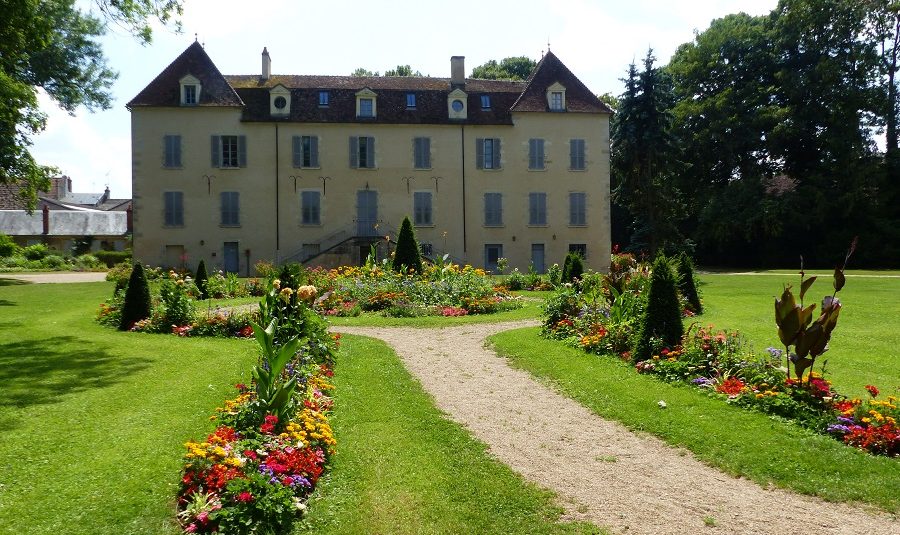The Vauvert park is fed by the Beuvron, more particularly by an underground aqueduct dating from 1700 in stone.
A path invites you to stroll, surrounded by different types of gardens (the spirit of the English garden and the spirit of the French garden).
History:
- Vauvert comes from Val vert: green meadow, brush and covers about 7,65 ha today.
- In the 1th century, along the rue de Druyes, there was a smallholding: with 1 barn and XNUMX dwelling house, called La Coulemelle. The park was then made up of land belonging to several owners.
- November 10, 1697: the farm is sold by Sr-Grasset to Rioult de Douilly, master of requests and adviser to the parliament of Paris.
- From 1700 to 1702: he buys several pieces of land and designs a leisure park. He plants lime trees and yews there (in the style of the French garden).
Construction during this period of the castle (classicism) with stables and sheds (current Maison de la Formation).
- 1754: Philiberte Lamy wife of the Marquis d'Argence, baron of St-Pierre-du-Mont, becomes the heiress.
The park takes the name of Parc d'Argence, as presented by the armes on the grid.
- During the Revolution: potatoes were planted in the yard
- 1794-1795: prisoners of war and soldiers met there.
- 1800: Guingat timber merchant in Clamecy sells the trees planted in 1700, plants fruit trees there but the flower beds and flowers disappear.
- 1828: Millelot adds the monumental stone staircase and replants many trees.
- 1875: Théodore Tenaille-Saligny, municipal councilor in Paris, former prefect: calls on a landscape architect to create a winding landscape, inviting you to stroll, using the natural riprap on the site.
- 1943: purchase by the City of Clamecy (3 francs): to house the museum's collections and build an open-air high school. However, the project was abandoned. Only the sports and fun program is carried out (football field, tennis court, bowling alley, games for children.
until the Revolution. They were officially adopted again by the municipal council on August 6, 1809.
It is nevertheless currently a real green lung for the Clamecycois - and any other person who can walk there freely. The castle cannot be visited, as it currently hosts the Espace Social des Vaux d'Yonne (the social center of Clamecy).
Note currently the presence of different species of wood including these: Sequoia, Laciniated Maple, Arizona Cypress, Ginko, Virginia Tulip...
Little more: In the direction of the gate, rue des Granges, the coat of arms of the town of Clamecy in the ironwork, at the top of the gate, are to be observed. They are emblazoned: azure strewn with billets of gold with a lion of the same, armed and langued gules, debruising over the whole. They appear for the first time on the seal of Guillaume IV, count of Nevers and Auxerre, and lord of Clamecy, which explains the identical coat of arms for these three towns. The seals of the provostship of Clamecy take up these coats of arms in the XNUMXth century, the city using them
Types
- Park and garden

